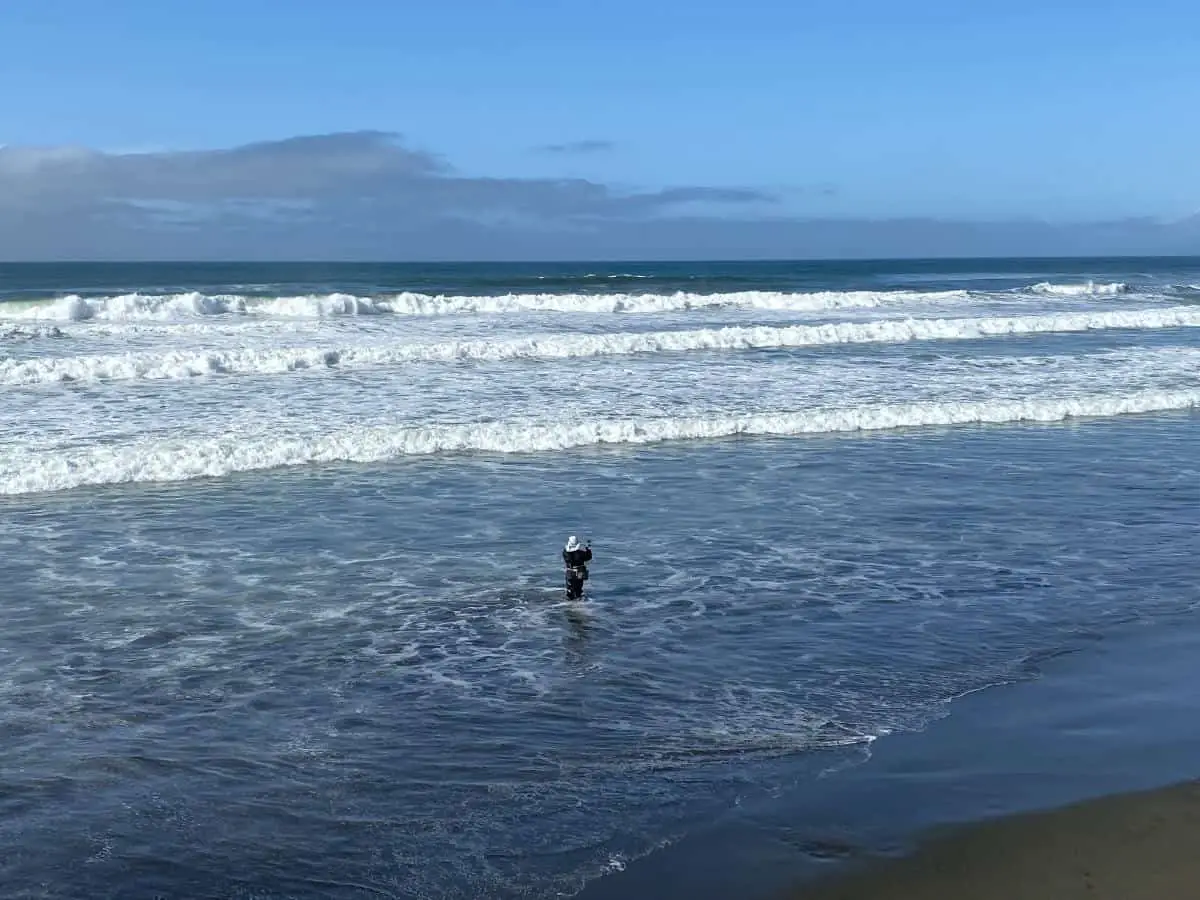When I was a novice at surf fishing, I always wondered how others were so successful with their surf fishing ventures. How could those folks have such great luck making catches from the surf when I wasn’t even sure where I should cast? I learned that as it turned out, it wasn’t luck at all. Those fishermen knew how to read the beach for surf fishing – and it worked.
Ho to read the beach for surf fishing? To read the beach you need to understand the topography of the beach. Learn how to identify different water structures like sandbars, throughs, points, cuts, holes, and rips by scouting at low tide and also understanding how to read a tide chart.
To help other surf fishermen, we have compiled a complete beginners guide to how to read the beach for surf fishing. You’ll learn all the most essential techniques for understanding the beach , so you’ll know just where to cast and fish – and just maybe bring home some great catches, too.
, so you’ll know just where to cast and fish – and just maybe bring home some great catches, too.
How to Read the Beach for Surf Fishing
Unlike some types of fishing, when it comes to surf fishing, walking up to the edge of the water and throwing in a line just really won’t cut it.
You can have the newest and nicest rod and reel, the best tackle and bait, and all the determination in the world, but if you don’t know the proper techniques for reading the beach, you won’t be very successful.
The good news is, you can learn how to read the beach in a few steps – so long as you know what to look for and what it means.
Understand Waves and Wave Action
If you’re surf fishing, waves and wave action will be your best friends as you’re attempting to read the beach.
Waves and wave action serve as a guide to the structures underneath the water’s surface. If you pay close attention and know what you’re looking for, they can tell you just about everything you need to know about what’s underneath the water and where you should fish.
Once you know how waves work and act, you’ll be able to identify soft water structures like sandbars, troughs, cuts, holes, rips, and points (which we’ll discuss later).
What’s so important about those structures’ underneath? That’s where the fish are.
And what’s so important about the waves? The effects of the water movement and the movement of the waves create good feeding conditions for a wide array of fish.
Most fishermen know that fish don’t just swim around aimlessly, especially predatory fish like the ones that can be caught while surf fishing. You need to know where to find them – and waves and wave action can tell you. Who knew waves could be so helpful?
How Waves Form and Move
Waves may seem like simple water movement, but there’s more to them than just that. Understanding how waves form and move will allow you to understand why they act the way they do and what those actions mean.
Most waves get their start from wind energy. As wind passes over water, some of its energy gets transferred to the water, and that energy begins passing through the water. As the wind’s energy passes through, it moves the water up and down, which effectively creates a wave.
Once waves are created, they begin to move in toward the shore. As the waves move, their energy begins to interact with the seafloor beneath.
Eventually, the waves begin to slow down and start “cresting.” Cresting is when a wave begins to increase in height, eventually reaching its tallest height.
What goes up must come down, though, because after waves create a crest, they eventually have to break, how a wave break is a huge tell in identifying water structures beneath the surface, and contains vital information for reading the beach for surf fishing.
Rick Troxler goes into more detail on the YouTube video “Understanding Waves & Wave Action.
Wave Breaks
Wave breaks are essential for reading the beach. So important that they can make or break your success with surf fishing.
Wave breaks tend to look beautiful and sound very satisfying, but among those looks and sounds is a whole other form of communication.
The way a wave break is related to water depth. Wave breaks can effectively tell you the depth of the seafloor and what surfaces are hiding beneath the water.
It’s probably starting to add up a bit more for you: understanding wave formation and movement means understanding wave breaks, which involves identifying soft water structures underneath the surface, which means knowing how to read the beach for surf fishing effectively.
Not too complicated of a process, right? You’ll be reading the beach in no time.
But first, let’s start with the two main types of wave breaks. Wave breaks can tell you a lot of the things you need to know about surf fishing, but you have to understand how to interpret them correctly.
Spilling Breakers
Spilling breakers are characterized by wave crests that “spill” forward (hence the name). According to an article from Oberlin College, spilling breakers create turbulent water and white foam as they travel across gently-sloped beaches.
What can those few characteristics tell us? Quite a lot. Waves that end in spilling breakers tend to move on gradually sloping bottom contours, and indicate flatter, more nondescript shorelines.
Rich Troxler notes that spilling breakers often happen on what can be referred to as “dead beaches.”
Where the areas in which spilling breakers occur are concerned, Rich says, “Surfers and babies may love them, but they’re not very good for fishing.”
Plunging Breakers
Plunging breakers are characterized by wave crests that form a curl. The curl falls over the wave, resulting in the entire wave collapsing at once.
The curled crests formed by plunging breakers fall forward with sizeable force and the waves come right to shore and closeout (often with a thump).
Waves that end in plunging breakers are often called cresting waves. Cresting waves and plunging breakers indicate a moderately-sloped bottom contour. This is because the water is deep enough to keep the wave rolling until it crashes against the shoreline.
Beaches with plunging breakers are beaches you want to stay at for surf fishing; those areas are perfect for it.
Identify Different Water Structures Through Wave Action
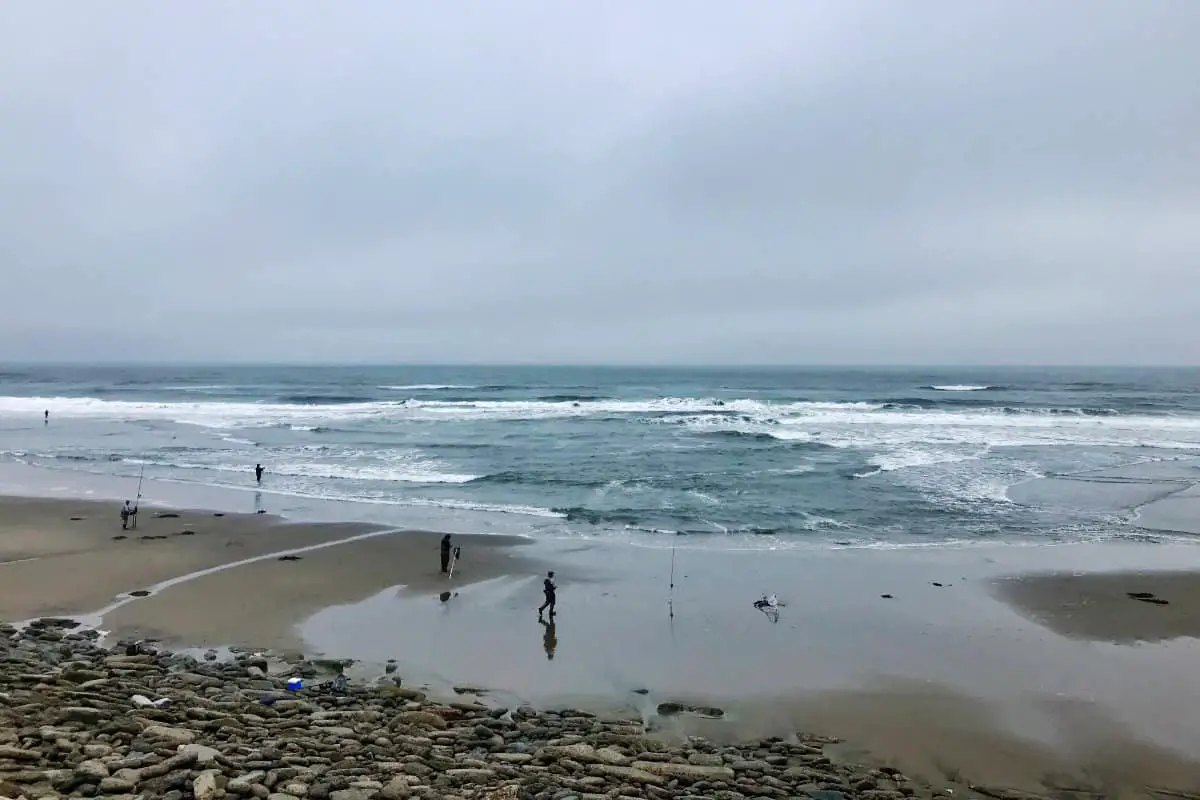
Now that you know about how waves form and move as well as the types of wave breaks and what they mean, we can jump into the next important part of reading the beach: identifying different water structures.
As we mentioned earlier, how waves move and break tell us how they interact with the bottom contour and soft water structures underneath the surface.
The water structures that can be identified by understanding waves and wave action are:
- Sandbars
- Troughs
- Cuts
- Holes
- Rips
- Points
Finding and utilizing these water structures is the big key to surf fishing. Why?
The thing is that fish love them. The changes in bottom contour and water structures are like a highway to fish, and most fish will stick to them like glue; as the waves wash and break over specific structures, ideal feeding conditions are created for the fish.
You can read waves to tell what type of structure or combination of structures are beneath the surface – therefore leading to the fish.
Identifying Sandbars
Sandbars are the most common structures that are given away by waves, and they come in a variety of shapes and sizes.
Not only that, but sandbars are typically comprised of three parts: the actual sandbar, a trough, and a cut.
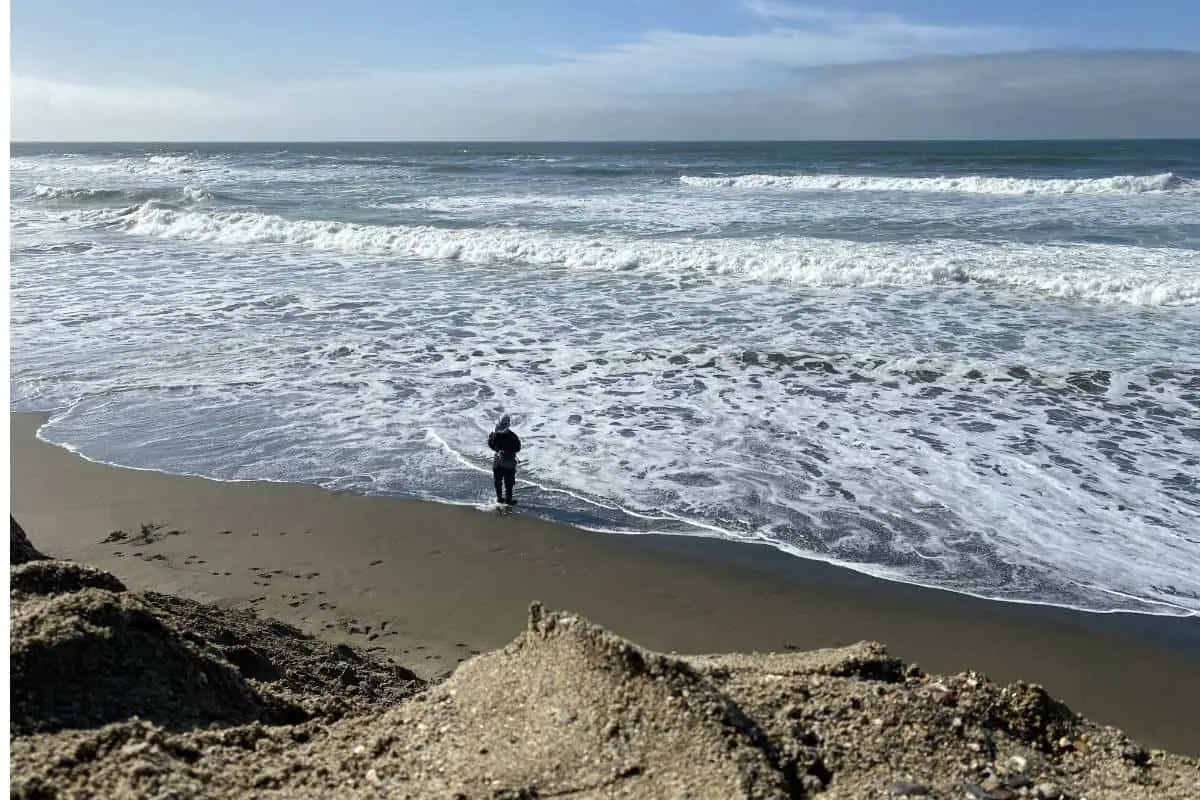
You’ve likely seen a sandbar before; they’re about the same as their name entails. Sandbars are large ridges of offshore sand and sediment that are built by waves.
Sometimes they can be exposed from the water and able to see easily, but other times, they’re beneath the surface of the water, creating a shallow area.
Troughs (which we’ll discuss shortly) are the areas of deeper water between a sandbar and the shore; cuts (which we’ll also discuss shortly) are the areas of deeper water between adjacent sandbars.
How can you tell if a sandbar is present? If there are breaking waves just offshore. When larger waves break offshore rather than right on the shore, that’s the tell of a sandbar; waves wouldn’t break offshore unless there were something to break on.
Once large waves break on the sandbar, smaller waves break off and begin to make their way into shore. As the smaller waves make their way to the beach, they may look like they are still or only rippling in an area between where the large waves broke and the shore.
That’s because the smaller waves are traveling over a trough, an area where the water is deeper than it is at the sandbar or shore.
Eventually, small waves with no cresting will make their way back to shore.
You’ll know there’s a sandbar around if you see large waves that break offshore, turn into small waves which seem more still in one area, and eventually end on the shore with no crests.
As you can tell, the waves move differently over different structures underneath the water. The way the waves move tell what structures lie underneath.
Sandbar Fishing Areas
Sandbars are an excellent water structure for surf fishing because they’re one of the most likely to have fish.
However, in his YouTube video “Reading the Beach,” Rich Troxler explains that not all structures, and not all sandbars, are created equal.
Just because you’ve identified a sandbar doesn’t necessarily mean you’re guaranteed to find fish. Some certain conditions and components need to be met for fish to be drawn there.
One of those conditions has to do with something you can identify: troughs. Troughs reside off sandbars, between the actual sandbar and the shore.
Troughs are where fish like to reside, especially if they’re somewhat deep. Shallow troughs typically don’t draw as many fish (and sometimes don’t draw any at all).
Fish love to stay in the areas where troughs meet the sandbars because those are prime feeding areas for them. The waves that get pushed over the sandbar push small bait – mollusks, spat, crabs – into the hungry mouths of the waiting predatory fish.
If you’ve read the beach and identified a sandbar, you’ve probably found a good area for fishing. However, the sandbar or one side of the sandbar must be within casting distance. If the sandbar isn’t within casting distance, you either won’t be able to fish it, or you’ll have to wait until lower tide to fish it.
Identifying Troughs
By this point, you’ve learned a bit about troughs–what they are and their relationship to sandbars. There are specific ways to identify troughs when reading the beach for surf fishing.
Troughs can be identified by large cresting waves that break, lead to an area flat or relatively still water, then break at shore.
Remember the order of water structures in relation to a sandbar: out furthest is the sandbar, between the sandbar and the shore is the trough, and closest is the shoreline.
Similar to sandbars, not all troughs are created equal. You’ll always want to keep in mind the depth of the trough, especially when getting ready to surf fish. That’s because, as you’ll recall, shallow troughs don’t draw much fish.
A good rule of thumb when it comes to troughs and surf fishing is the deeper, the better.
So, how can you tell if a trough is shallow or deep? It all comes back to that wave action and behavior. How the waves relate to the sandbar and trough can tell you just how deep (and good for fishing) a trough is.
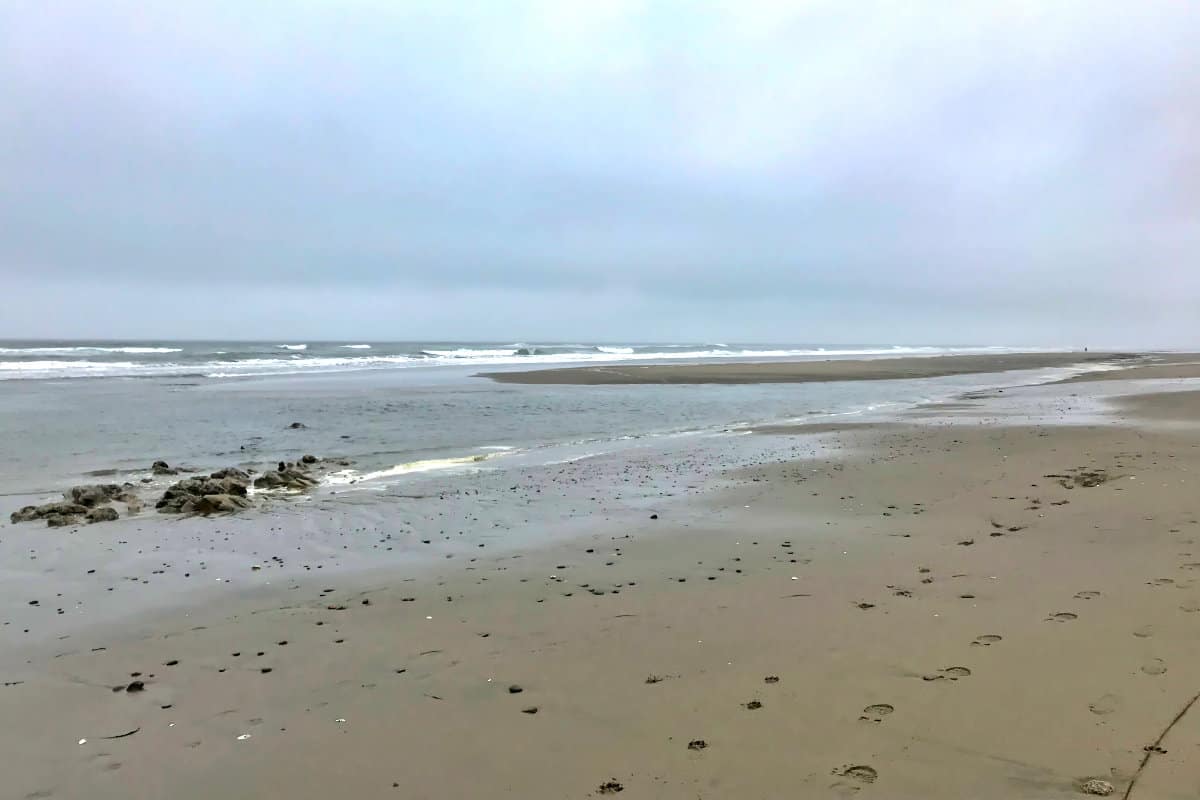
Deep Troughs
If waves have little action and no cresting (forming into a curl at the top), that means there’s a steep vertical drop from the area of the sandbar into the area of the trough. These characteristics indicate a deep trough. Fish are reasonably likely to be here.
Somewhat Shallow Troughs
If the waves that break on the sandbar crest and slowly lose their peak over a short distance, that means the sandbar gradually drops into the trough. This wave behavior indicates a somewhat shallow trough. Fish are less likely to be here, but there’s still a decent chance of them.
Very Shallow Troughs
Lastly, if the waves that break on the sandbar continue to crest into the shore, that means there’s only a small difference in depth from the sandbar to the trough. These characteristics are signs of a very shallow trough. Fish are pretty unlikely to be in a very shallow one.
Identifying Cuts
Cuts are the third and final component of a sandbar system. While troughs are areas running parallel between sandbars and the shore, cuts are areas that run between two sandbars.
Cuts are the areas or channels where water passes from a trough, between two sandbars, and back out to sea, and they often become larger over time as the waves shift the sand and sediment.
Like sandbars and troughs, cuts can be identified by their lesser wave action or lack of wave action.
You already know how to identify a sandbar. Now imagine that as you see waves that indicate a sandbar, there’s a section of waves that seems less powerful, or like it’s not moving at all. Those “spaces” between waves indicate cuts.
Cuts are indicated by lesser wave action or lack of wave action because the waves don’t travel on the sandbar to build and break. Instead, the waves roll through the cut’s area and keep rolling right on to the shore.
Cut Fishing Areas
Rich Troxler offers a few helpful tips for knowing how to tell if you’ve found a cut worth fishing in. However, these tips take more of a hands-on approach than the previous tips. This time, you can really (and maybe literally) dip your toes into reading the beach.
First, locate a cut in the sandbar system by reading the beach during the day, or by feel at night. Next, cast your plug. You can see where the current is traveling by where it is carrying your plug.
Once you’ve established where the current is traveling, you can work your way down in the direction of the current in the cut.
You should eventually notice that there’s an area where your plug no longer drifts to the side; rather, it ripples without you hardly manipulating your reel. At this point, your reel should stay more or less in front of you as it’s pulled outward by the current.
That’s how to know you’ve found a good place–the area is right where the bait and fish enter the trough (AKA – prime real estate).
Identifying Holes, Rips and Points
Holes, points, and rips are other water structures that can be read for surf fishing; they’re what we consider smaller or “less obvious” water structures. These structures are that they can often appear in combination with one another, but still have distinct ways of being identified.
Holes
Holes are relatively common on beaches, although they may be tough to see, especially at higher stages of the tide. They are a deeper area of water structure and typically run perpendicular to the beach.
Holes are easiest to identify during low tide when the water is drawn back, and the surface reveals itself. They may be identified by darker-colored water or a lack of breaking waves. Waves may break further out on either side of a hole, while waves that travel over the hole break near the shore.
Rips
Holes are often known to be accompanied by rips. This is because when water reacts with the hole, it usually goes back out to sea, creating a rip (or riptide).
According to the YouTube video below “Reading the Beach – Holes, Points, Lips & Rips,” rips may be identified by ripples in the water followed by white sea foam moving back out to sea. Often, you’ll see both of those characteristics together.
Rips are known for being dangerous, as the currents can be strong and hard to predict. For that reason, some fishermen may be likely to avoid them.
Points
You’ve very likely seen a point before; points are natural sand, sediment, or land formations that jut into the ocean, often forming a “point” shape.
According to “Surf Fishing,” points tend to border deep holes and can be located on either side of holes along the beach.
Points are identifiable because of their mass and shape. You will be able to see how a point protrudes out to sea as it is typically above the water.
Identify Different Water Structures by Scouting at Low Tide
You’ve learned a multitude of ways to read the beach and identify water structures through water action, but there’s another way to read the beach and identify water structures: scouting them out at low tide.
During low tide, water structures are often revealed that were previously underwater; low tide is really when the ocean floor and all its structures reveal themselves.
When you “scout” the beach at low tide, you’ll see formations resembling humps and dips. The humps and dips are often proportionate to sandbars and holes, and likely indicate a sandbar or hole that was previously covered by water at high tides.
You can scout water structures at low tide just about wherever you feel like it, but there are some specific times in which scouting at low tide is the best.
When to Scout Water Structures at Low Tide
According to “All about tides” by the National Tidal and Sea Level Facility, tides build up to a maximum and break down to a minimum two times a month.
The tides that have the greatest difference between high and low tides, meaning they result in tides that are higher than average or lower than average, are called spring tides.
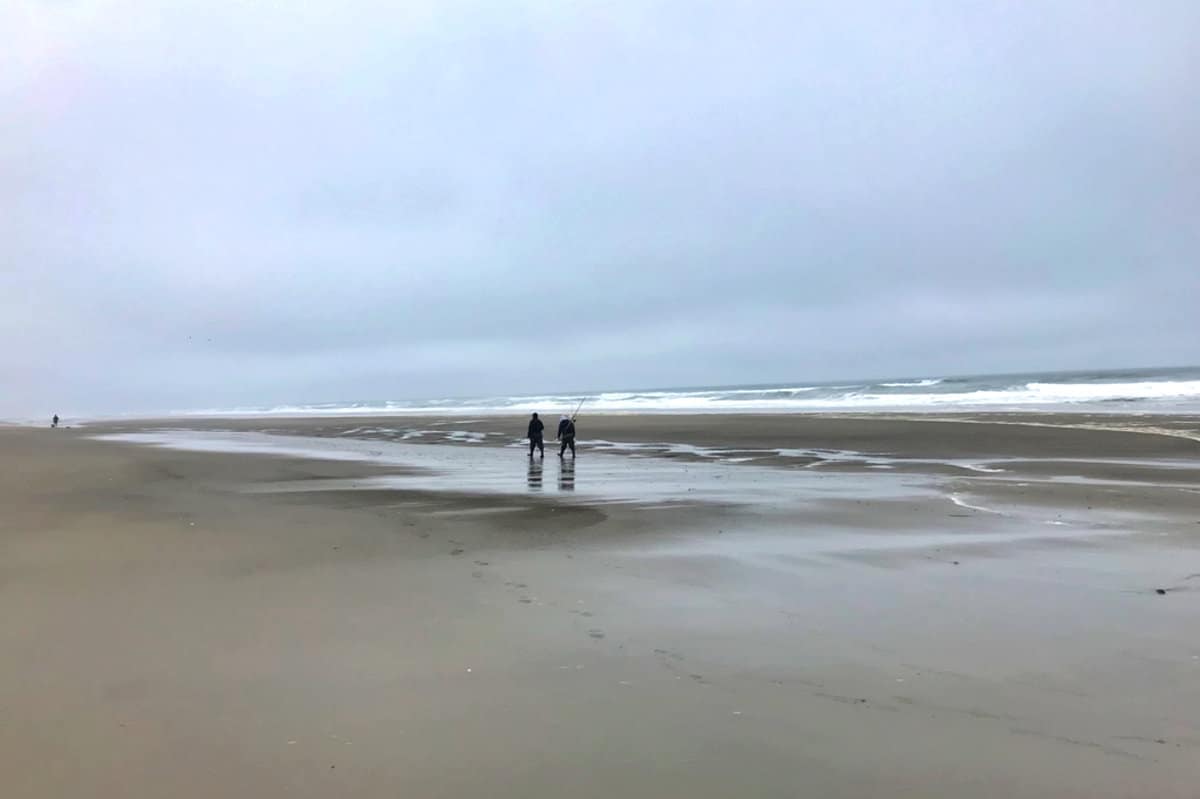
Spring tides happen just after every full moon and only after every new moon and are the best times to scout for water structures if the tide is low.
When scouting for water structures during a low spring tide, tides will be lower than average, thus revealing considerably more water structures to scout for surf fishing.
Tips for Successfully Reading the Beach
Now you know precisely how to read the beach for surf fishing and what to look for to identify water structures that tend to attract fish, but there are still a few more tips for successfully reading the beach that will help you in your surf fishing ventures.
Remember Every Beach is Different
This tip speaks for itself. Every beach is different!
When reading the beach and putting your skills to the test, it’s essential to keep in mind that not every beach will have water structures that attract fish.
Don’t let that get you down – if you’re reading a beach that doesn’t seem very suitable for surf fishing, you can try your knowledge at a different beach or even a bit further down the shoreline.
Beach Contour Changes Frequently
Remember all those water structures we talked about?
We refer to those structures altogether as beach contour, and beach contour changes all the time. The ocean loves to keep us on our toes!
Just as water structures like sandbars, troughs, cuts, holes, and points are formed, they can be broken down and moved due to the wind, tides, storms, and other elements. Sand and sediment never go away, but they move and change forms frequently.
It’s essential to keep in mind that beach contour changes frequently, and you should try to read the beach every time before you go surf fishing. You never know; something might just be different from the last time you read the beach.
Look at the Characteristics of the Sand
Believe it or not, the characteristics of the sand on a beach can give you clues about the structures that may be beneath the water’s surface.
For example, if you come across coarse sand with a lot of seashells being carried to shore from the sea (say that five times fast!), there’s likely a fairly deep hole near that area.
Final Thoughts
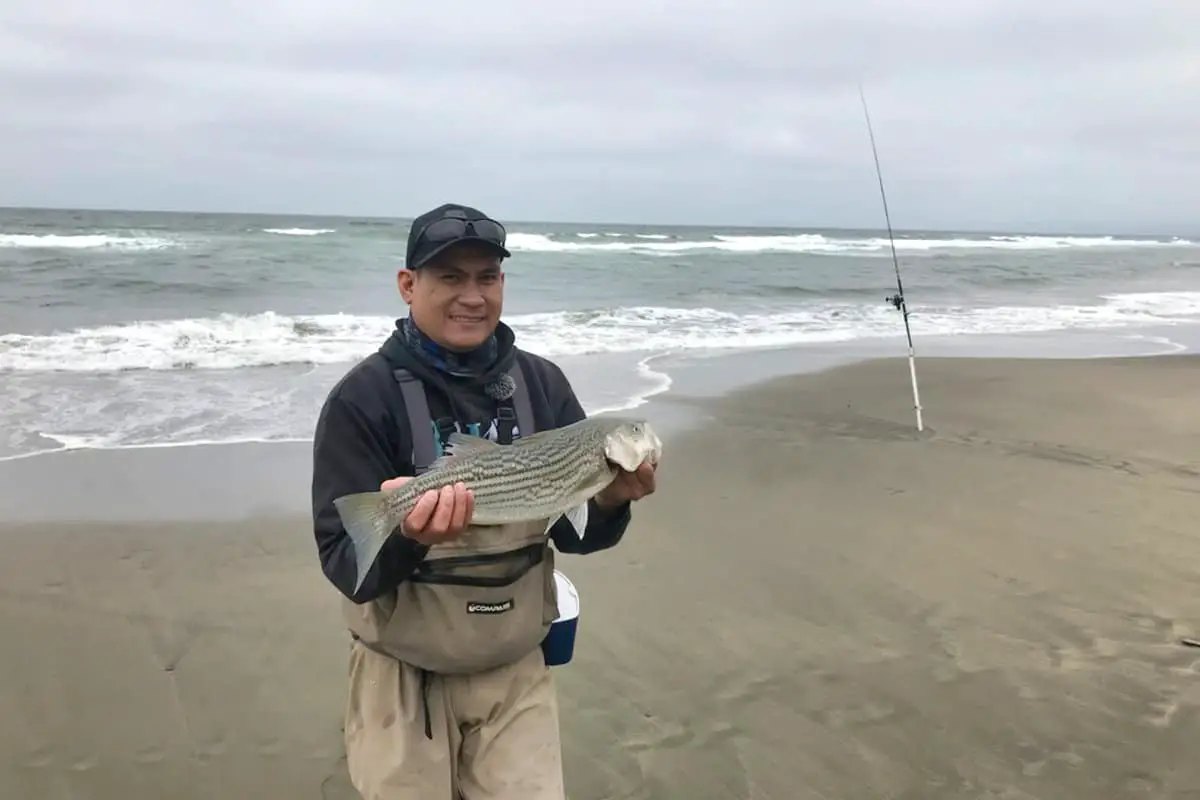
Reading the beach can tell you just about everything you need to know about where to surf fish.
Understanding waves and wave action can help you identify water structures beneath the surface, and the way the waves interact with those surfaces can indicate the best areas for surf fishing.
The beach can also be read by “scouting” it at low tide; when the tide is low, the seafloor and all its structures reveal themselves in plain sight.
At first glance, the beach and the waves may all look completely the same, but now you know that’s not the case at all. There’s a whole little world out there that’s great for surf fishing – as long as you know where to look.

